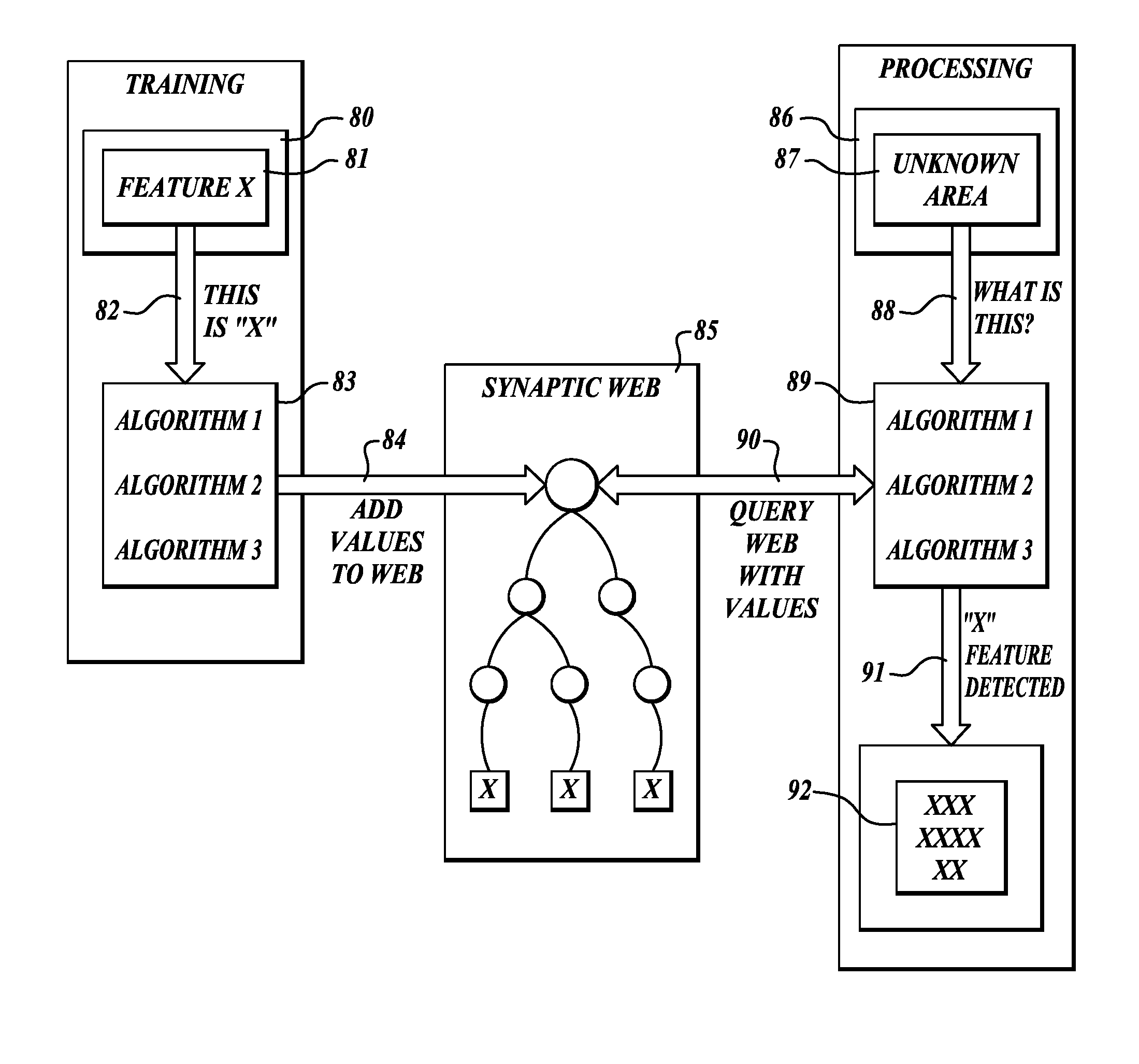Methods and systems for data analysis and feature recognition including detection of avian influenza virus
a technology of data analysis and feature recognition, applied in the field of data analysis, can solve the problems of sacrificing substantial meaning and detail for human readability, information can be lost, and the original data is often lost significant information, so as to reduce the need for human analysis, the effect of rapid development and improvemen
- Summary
- Abstract
- Description
- Claims
- Application Information
AI Technical Summary
Benefits of technology
Problems solved by technology
Method used
Image
Examples
Embodiment Construction
[0097]Although several of the following embodiments and examples of a data analysis and feature recognition system are described with reference to specific data types, such as image data and audio data, the invention is not limited to analysis of these data types. The systems and methods described herein can be used to recognize discrete features in a data set or any other collection of information that can be represented in a quantifiable datastore.
[0098]The embodiments of a data analysis and feature recognition system described herein generally involve the analysis and organization of digital data streams for the purpose of learning and repeatedly recognizing patterns and objects within the data. The digital data streams may be conversions of an analog source to digital form. In some embodiments, the data organization structure used by the system involves a web (referred to herein as a “synaptic web”) of interconnected data fields used to describe the elements of a defined object....
PUM
 Login to View More
Login to View More Abstract
Description
Claims
Application Information
 Login to View More
Login to View More - R&D
- Intellectual Property
- Life Sciences
- Materials
- Tech Scout
- Unparalleled Data Quality
- Higher Quality Content
- 60% Fewer Hallucinations
Browse by: Latest US Patents, China's latest patents, Technical Efficacy Thesaurus, Application Domain, Technology Topic, Popular Technical Reports.
© 2025 PatSnap. All rights reserved.Legal|Privacy policy|Modern Slavery Act Transparency Statement|Sitemap|About US| Contact US: help@patsnap.com



